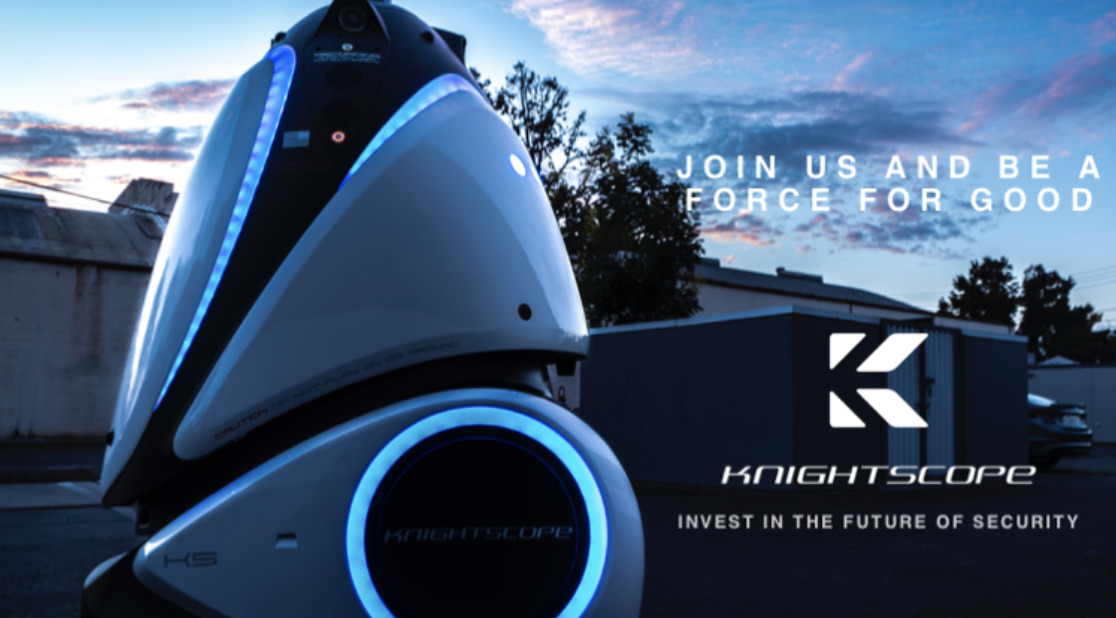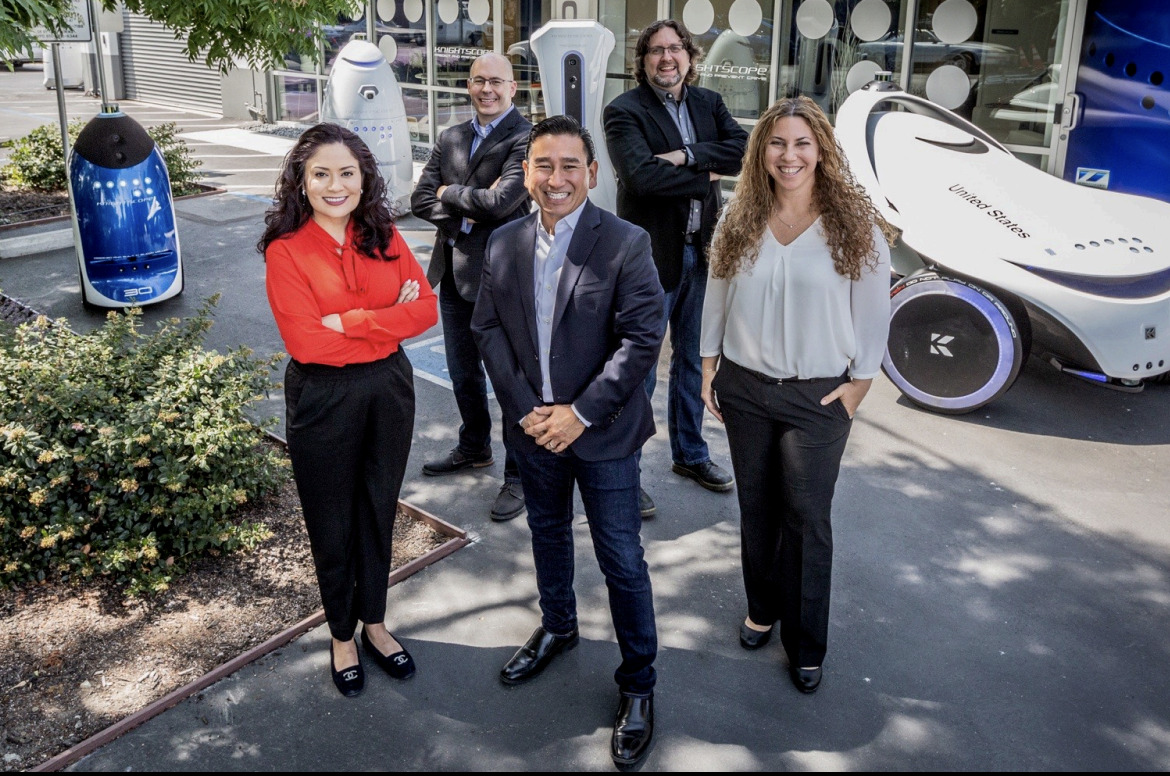The Startups Team
Science Fiction Fact
For many, the phrase “crime-fighting robot” conjures up images of Robocop eradicating a dystopian Detroit of hapless ne’er-do-wells.
Now, the core technology that was once merely the product of science fiction writers’ imaginations is less science fiction than it is, well, actual science.
Fear not. Unlike their fictional counterparts — which inevitably go haywire and become less prone to “protect and serve” than “attack and sever”— the increasingly-prevalent bots of the real world are mainly concerned with using actionable data in the fight against crime.
Welcome to the dawn of the Age of Security Robots, where a new crop of tech companies are (literally) rolling out fleets of artificially-intelligent crime-fighting machinery and jockeying for position to revolutionize the $500 billion security industry.
While there are several promising entrants in this space, one that’s turning more than its fair share of heads is a Silicon Valley-based startup that has secured an excess of $40 million in funding from more than 6,000 investors and landed blue-chip clients like Microsoft, NBC Universal, and the Sacramento Kings.
And did we mention they did it all in just 5 years?
Crime, Meet Tech
Imagine:
A world in which crime is reduced by half, ushering in an all-new era of safety and peace of mind while significantly impacting everything from housing prices, to property values, to insurance rates, and the viability of local businesses.
No, this isn’t a trailer for an optimistic sequel to Minority Report. It’s Knightscope’s big picture vision of a not-too-distant future — one the company hopes to bring to fruition with the aid of its fully-autonomous, self-driving security robotics platform.
While Knightscope’s long term mission of making the US the safest country in the world is a lofty goal to be sure, when you stop to consider that its cutting-edge robots are already operating across 15 states and the team is busy evaluating a potential IPO, it’s clear that the tech has legs.
Or, more accurately, wheels.
THE NUTS AND BOLTS
Knightscope’s growing family of security machines includes the K1, a stationary pillar optimized for use at ingress and egress points; the K3, an indoor model that roves hospitals, malls, offices, and warehouses; and the K5, an outdoor bot designed to patrol corporate campuses, manufacturing & logistics facilities, and parking lots.
Slated to go beta later this year is the K7, a four-wheeled robot that allows for sideways motion in constrained environments and built to navigate large perimeters (think airports) and more difficult terrain.
The hardware — particularly the indoor and outdoor models — is reminiscent of an ultra-modern Dalek from Dr. Who. While the bots’ physical appearance is arresting (pun intended), the secret sauce lies within the machines’ numerous onboard sensors.
These sensors give Knightscope robots the ability to do things like update a 3D map of its surroundings every 20 milliseconds, automatically scan hundreds of license plates per minute, differentiate between innocent passerby and a potential criminal, identify suspicious wireless signals down to the Mac and IP address, allow for two-way audio broadcast, and detect abnormal temperature changes — among a host of other advanced capabilities.
The robots send all of the collected data to the cloud for posterity, storing it for as long as the client wishes.
If you’re concerned that this level of autonomy runs the risk of rendering living, breathing police officers and private security guards obsolete, rest assured. Knightscope’s robots are intended to fill in the blind spots — acting as an extra set of eyes and ears and alerting human authorities whenever criminal activity is detected.
In other words, the robots provide the actionable data, while humans are still the ones making critical decisions about how to respond.
"HALT, Citizen!"
But just how effective are these guys at their jobs on a scale of Chief Wiggum to John McClane?
We’ll let you be the judge:
Some of Knightscope’s most notable (and, let’s be honest, awesome) success stories to date include aiding law enforcement in issuing an arrest warrant for a sexual predator, helping catch an armed robbery suspect, assisting in the capture of a corporate vandal, preventing a fraudulent insurance claim, and eliminating vehicle break-ins.
It’s little wonder then that $6 trillion asset managers like BlackRock, $300 billion multinational conglomerates like Samsung, and $5 trillion financial institutions like Citizens Bank are turning to Knightscope to bolster and modernize its security efforts.
MEET THE HUMANS
Behind every great robot is a great human. And in this case, a team of them.
Launched in 2013, Knightscope was conceived of by former police officer and seasoned entrepreneur Stacy Stephens in response to the tragedy at Sandy Hook Elementary School in Newton, Connecticut.
At the helm is CEO Bill Li, who, among other accomplishments, previously founded and served as COO of GreenLeaf — a Ford subsidiary (now part of the $8 billion LKQ Corporation) that grew to become the world’s second-largest automotive recycler with 600 employees and $150 million in sales.
Heading up the company’s tech team is Chief Intelligence Officer Mercedes Soria, a former Deloitte software engineer and recipient of the 2017 Abie Award for Women in Technology, as well as Silicon Valley Business Journal’s Women of Influence Award.
Chief Design Officer Aaron Lehnhardt — a former senior designer with Ford Motor Company — brings more than 20 years of experience in 2D and 3D product and industrial design to the table, while CFO Marina Hardof has held financial roles across public and private companies like Ernst & Young and Deloitte for the last 15+ years.
Since inception, the team has secured 4 patents for its proprietary technology and more than $40 million in investments from four major corporations and over 6,000 family offices and retail investors.
The team has also earned bragging rights for solidifying Knightscope’s status as the only company currently operating fully autonomously 24/7/365 across an entire country. For context, over $80 billion has been invested in self-driving autonomous technology to date with more than 50 companies currently working on commercializing the technology, according to Crunchbase Insights.
Make Way For Bots
While Knightscope might still have some work left to do before realizing its ultimate goal of catapulting the US to the top of the safest country list, the company shows no signs of slowing down any time soon.
While the robots keep watch on the streets, the team is laser-focused on securing up to $50 million in pre-IPO growth capital. Should conditions prove favorable for listing, Knightscope is prepared to hit the stock ticker with its pre-selected symbol: “KSCP.”
In the meantime, in the event you happen to find yourself crossing paths with one of Knightscope’s bots the next time you’re at the mall, it’s advised to stay on the right side of the law.
Find this article helpful?
This is just a small sample! Register to unlock our in-depth courses, hundreds of video courses, and a library of playbooks and articles to grow your startup fast. Let us Let us show you!
Submission confirms agreement to our Terms of Service and Privacy Policy.
Already a member? Login
No comments yet.
Start a Membership to join the discussion.
Already a member? Login



